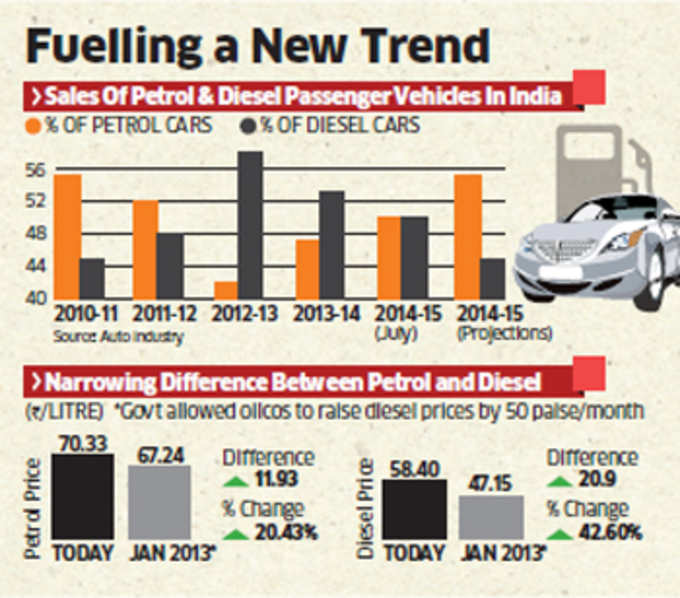That is fast changing with the government phasing out diesel subsidy and petrol, which is deregulated since June 2010, getting cheaper. Diesel is nearly 14% costlier now than a year earlier, while petrol has become a bit cheaper year-over-year. The trend in the automobile market is quite pronounced on some models.
When
However, last month, just a little over half the buyers for Amaze chose a diesel variant. “Customers are now more educated over their needs and are not going blindly for diesel cars any longer,” said Jnaneshwar Sen, head for marketing and sales. Honda witnessed a similar trend for the new City, with just 50% of buyers preferring diesel in July compared with 70% at the time the mid-size sedan was launched in January this year.
According to executives at car manufacturers that ET spoke to, the festival season that commences next month looks perfect for petrol cars to capture lost ground as the overall market is also on a recovery path with domestic sales recording three straight months of growth. They expect shift of customer preference for conventionally wiser petrol – maintenance cost of petrol cars is usually lower and fuel is more environment friendly – to continue, and are accordingly adjusting their strategies.
 |
Companies aren’t just altering production plans, but also offering petrol variants at aggressive price to tap the shift. “Customers are increasingly going towards petrol and keeping the same trend in mind, we aggressively priced the new car with the intention to increase the share in the premium hatchback segment,” said
Overall ownership cost of diesel-fired vehicles has gone up, said Amit Kaushik, principal analyst, autos, at consultancy firm
Price gap between the two fuels now stands at just Rs 12 and may further close in coming months because of government strategy of increasing diesel price by 50 paise every month until it aligns with market rates.